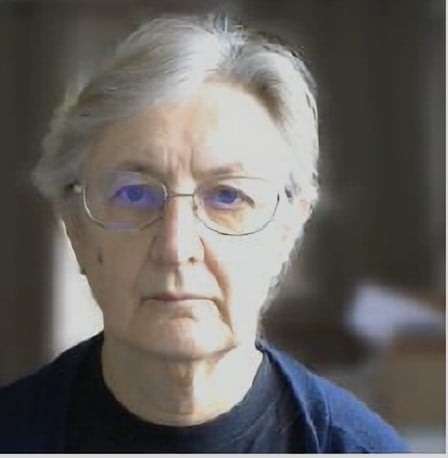
Journal Menu
► ▼ Journal Menu-
- Minerals Home
- Aims & Scope
- Editorial Board
- Reviewer Board
- Topical Advisory Panel
- Instructions for Authors
- Special Issues
- Topics
- Sections & Collections
- Article Processing Charge
- Indexing & Archiving
- Editor’s Choice Articles
- Most Cited & Viewed
- Journal Statistics
- Journal History
- Journal Awards
- Conferences
- Editorial Office
Journal Browser
► ▼ Journal BrowserNeed Help?
Announcements
15 December 2021
Dr. Yannicke Dauphin Appointed Editor-in-Chief of the Section “Biomineralization and Biominerals” in Minerals

We are pleased to announce that Dr. Yannicke Dauphin has been appointed Editor-in-Chief of the Section “Biomineralization and Biominerals” in Minerals (ISSN 2075-163X), as of November 2021.
Dr. Yannicke Dauphin received her Ph.D. degree in palaeontology in 1973, and her “Habilitation Thesis” in 1983, both from University Paris XI (France). She was an assistant professor at the University Pierre & Marie Curie (now Sorbonne University), with teaching duties in palaeontology and computer sciences for students in geology. She was PI in several French and international programs dealing with the understanding of biominerals, and is now an honorary researcher at the Museum national d’histoire naturelle de Paris.
As fossils are widely used to reconstruct palaeoenvironments, she studied the microstructure of mollusc shells, and then extended her interest to corals, bones and teeth. Skeletons and shells are not pure minerals; they comprise an organic matrix and are easily modified in fossils. Palaeoenvironmental reconstructions are often based on the geochemical data of these biominerals, and the quality of the fossil record is important. It is necessary to improve our understanding of the origins of alterations in fossils. Comparisons of modern and fossil structures were carried out using optical microscopes, SEM and AFM, and their composition was analyzed using in situ methods (EPMA, FTIR, Raman, SIMS, ToF SIMS, Synchrotron X-ray fluorescence, XANES). The extracted organic components were analyzed using HPLC, electrophoreses, FTIR, Raman, and XANES. Experimental diagenesis was also performed to try to unravel the main involved factors, with implications for our knowledge of climate changes by providing primary data on the structural and compositional biases in fossil biominerals.
The following is a short Q&A with Dr. Yannicke Dauphin, who shared her vision for the journal with us, as well as her views of the research area and open access publishing:
1. What appealed to you about the journal that made you want to take on the role of its Section Editor-in-Chief?An increasing number of editors are complaining about the “lack” of reviewers. Usually, competent people exist, but for diverse reasons, they do not want to review manuscripts. I believe I can help to find experienced reviewers in the field of biominerals.
2. What is your vision for the journal?Biominerals were not a hot topic in the first issues of the journal. Now it is a section. This evolution shows that the journal is not static. There is no specific journal fully dedicated to biominerals, so Minerals is important because it is not focused on a small topic. Modern and fossil biominerals are studied for a better understanding of biological evolution, the paleoenvironnment, etc.
3. What does the future of this field of research look like?The future is good, because of the large practical implications of the study of biomineralization: medicine, environment, aquaculture, industry, agriculture, etc. are of concern.
4. What do you think of the development of open access in the publishing field?Open access is good and bad. Good because it allows everybody to read the articles for free. Bad because the fees are very expensive for small institutions, so these institutions are not able to publish in open journals. Big labs, and labs where some money must be used for publication are in a better position.



